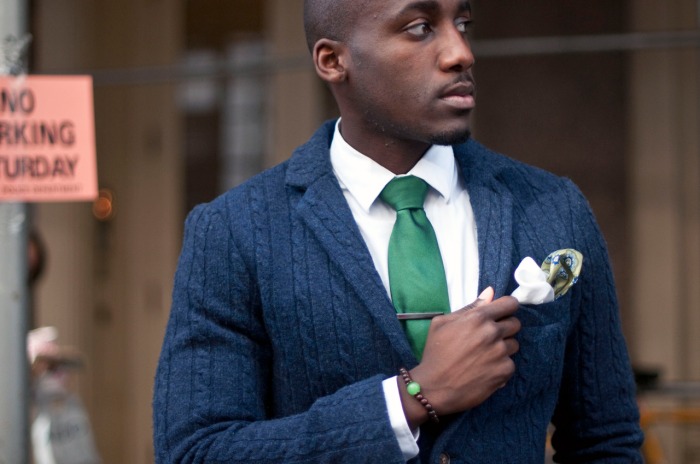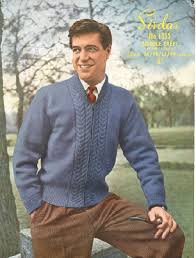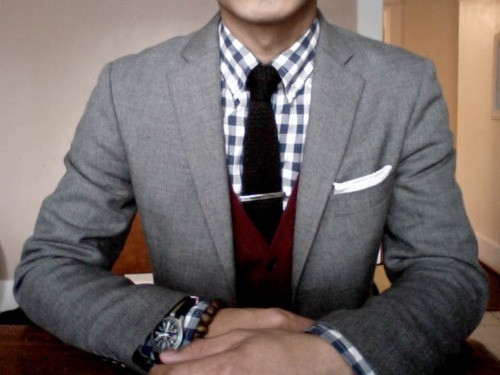Contrary to popular belief, strutting Cardigans will not make you flop like Cristiano Ronaldo on the biggest of stages. Nor will it turn you into Christina Bosh on Center Stage (no Pun intended) for the Miami Heat. Just as you’re about to reject the notion of Cardigans as a sissy’s item, think again. Cardigans, in many a sense, help underline what the modern man has become. Flexible, adaptable and stylish. We have developed an ability to groom ourselves better, accessorize with more discretion and comb through fabric and style detail with a more discerning eye than in decades past. Cardigans can attest to this. We have taken what was thought to be a dusted off piece of clothing (unless you’re English) and embraced it as warmly as your neighbors across the pond would with Scones and Jam.
So where do Cardigans originate from? The Cardigan was named after James Brudnell, the 7th Earl of Cardigan and British Army General in the 19th Century. Supposedly, it was modeled after the waistcoat that British officers wore during the Crimean War. James Brudnell popularized the garment and hence the name ‘Cardigan’ was borne. Originally, the term ‘Cardigan’ referred to a knitted sleeveless vest, but has since been adapted to mean a sleeved, open-front sweater with buttons (or occasionally, a zipper)
What defines a Cardigan?
- A knitted sweater
- ‘V’ neck
- Buttoned front (while there are zip variations, traditional cardigans are buttoned)
- No sleeve buttons
- Fully Sleeved
What makes a high quality Cardigan?
So with the masculinity of a Cardigan now clearly established, what exactly constitutes a finely constructed Cardigan?
1. Fit should be comfortably loose but not baggy. While the shoulder seams should end at the top of your shoulder, they do not need to be as fitted as your shirts. The bottom hem of the cardigan should cover your waistline but not your trouser pockets. It should button tight enough so that your Cardigan doesn’t sag in an unpleasant way whenever you lean / bend forward.
Ideally, you should be looking for a Cardigan with enough room to layer over a shirt, but fitted enough without become a bulky layer middle layer should you choose to wear it under a blazer.
A finely constructed cardigan for men should have a taper that flatters a man’s body, where it narrows at the abdomen and widens out by the hips to accentuate one’s chest. While a Cardigan is not meant to be as precisely fitting as a suit, it’s intended effect for the discerning gentleman should be an adequate taper in line with that of a suit jacket, but with a softer and more casual style.
2. Fabric Choice – While Cotton is the most accessible material and you’ll encounter little difficulty in finding a great cotton Cardigan, for something to protect you during colder months of the year, Wool should be your defacto choice. This will protect you much more effectively from the cold weather as a result of its insulating characteristics. Inferior quality wool will result in greater skin irritation, so pay careful attention to the quality of wool that you are opting for.
3. Color Choice – While Dark Blues and Grey’s will work throughout the winter season and help accentuate some earth tones you may be wearing, a brighter color could give your outfit some extra pop. It ultimately depends on what type of look you are seeking to accomplish.
Pairing options for a Cardigan
A cardigan collar should be deep enough to allow for items that you wear underneath to be seen, but not too deep as it would lose its utilitarian use of keeping you warm. When paired with a blazer or suit, Cardigans can look fantastic as part of a three-piece ensemble. When paired with a suit, it is safest to go with simpler colors such as a grey or blue, though beige and red can work wonders too.
Are Cardigans an essential part of your wardrobe? We would love to read your comments below!
Looking to get your tie wardrobe restarted? Check out our Tie Starter Kits here at The Dark Knot!



